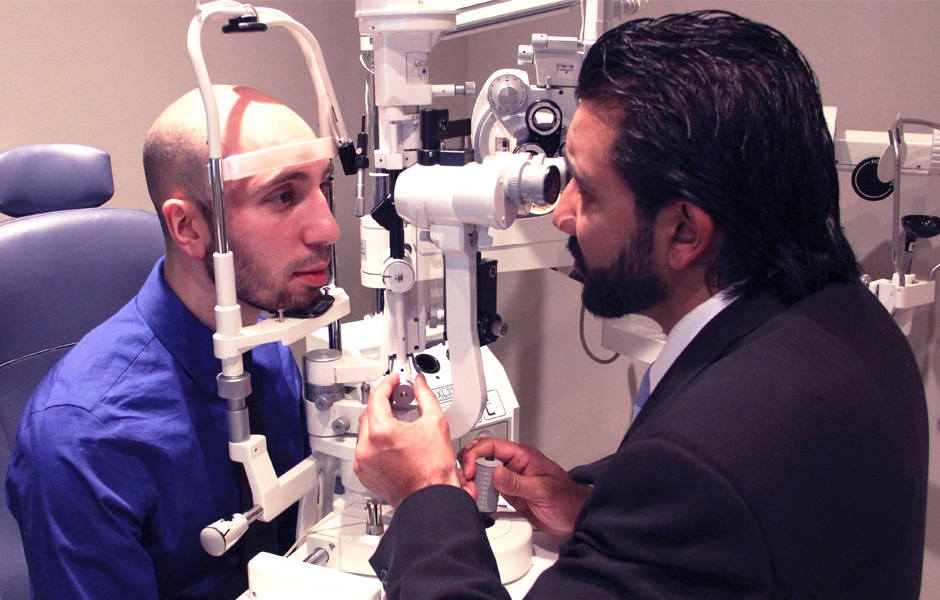Comprehending the Different Vision Correction Procedures Available for Clearer View
In the realm of vision improvement procedures, a plethora of choices exist to resolve refractive errors and give individuals with clearer view. Allow's discover the details of these procedures and lost light on the path to accomplishing improved vision clearness (Eye Center Andalusia).
LASIK Surgery
LASIK surgical treatment is an usual refractive procedure utilized to deal with vision problems such as nearsightedness, astigmatism, and farsightedness. This surgical strategy, which stands for Laser-Assisted in Situ Keratomileusis, intends to improve the cornea to boost just how light is concentrated on the retina, ultimately enhancing vision clearness.
One of the key benefits of LASIK surgery is the fast improvement in vision experienced by people. In general, LASIK surgery is a prominent choice for people looking for a long-lasting remedy for their vision issues.
PRK Treatment

PRK is an appropriate alternative for people with thin corneas or those at a higher danger of eye injuries, as it does not entail developing a corneal flap. The recovery procedure for PRK is a little longer compared to LASIK, as the epithelium needs time to regenerate. Individuals might experience pain and fuzzy vision for a couple of days following the procedure.
Despite the longer healing time, PRK can produce superb cause vision improvement, making it an important option for those that might not be ideal candidates for LASIK surgery. - Cardiologist Andalusia
Implantable Lenses
In contrast to PRK where the cornea is reshaped directly, implantable lenses provide one more technique for dealing with vision by putting fabricated lenses inside the eye. This procedure is particularly useful for individuals with high degrees of astigmatism, nearsightedness, or farsightedness that might not be ideal prospects for laser surgical treatments like LASIK or PRK.
Implantable lenses, likewise called phakic intraocular lenses, work by supplementing the eye's all-natural lens with a fabricated one. These lenses can be positioned before the all-natural lens (anterior chamber) or behind the iris and in front of the natural lens (posterior chamber) By readjusting the power and positioning of these lenses, eye doctors can effectively correct refractive errors and boost aesthetic acuity.
One benefit of implantable lenses is that they are detachable and exchangeable, providing adaptability for future modifications. However, just like any procedure, there are threats included, such as infection or cataract formation. Clients considering implantable lenses must speak with an eye treatment specialist to establish the most ideal option based upon their individual requirements and eye health.
Corneal Rings

The procedure for inserting corneal rings is fairly fast and minimally invasive, frequently performed as an outpatient treatment. Throughout the surgical treatment, the eye doctor makes a little cut in the cornea and inserts the next rings at a details depth. As soon as in place, the rings help to reshape the cornea, providing a smoother surface for light to enter the eye, which can result in more clear vision.
Corneal rings are considered a reversible treatment, as they can be removed or changed if essential. While they might not entirely remove the need for glasses or call lenses, corneal rings can considerably improve vision quality and general visual comfort for people with keratoconus or various other corneal abnormalities.
Refractive Lens Exchange
Complying with the adjustment of corneal irregularities with procedures like corneal rings, an additional vision improvement method that can attend to refractive mistakes is Refractive Lens Exchange (RLE) RLE is an operation that entails changing the eye's natural lens with a synthetic intraocular lens (IOL) to fix refractive errors such as presbyopia, nearsightedness, and farsightedness. This procedure is particularly helpful for people who might not be appropriate prospects for procedures like LASIK or PRK due to variables such as slim corneas or high refractive errors.
RLE belongs to cataract surgical procedure, as both involve getting rid of the eye's natural lens; however, in RLE, the lens is clear, not over cast as in cataracts. The man-made lens implanted throughout Recommended Site RLE can be tailored to attend to the person's certain refractive error, supplying clear vision at various distances. Recuperation time for RLE is relatively fast, and patients can anticipate improved vision soon after the treatment. As with any type of procedure, potential dangers and complications exist, so a thorough examination with an eye treatment professional is important to identify if RLE is the ideal vision correction choice.
Final Thought

In the world of vision improvement treatments, a wide range of options exist to resolve refractive errors and provide people with clearer sight.LASIK surgery is an usual refractive procedure made use of to remedy vision problems such as astigmatism, nearsightedness, and farsightedness.While likewise an usual refractive procedure, the PRK (Photorefractive Keratectomy) strategy differs from LASIK surgical treatment in its approach to dealing with vision problems.Complying with the correction of corneal abnormalities with treatments like corneal rings, one more vision improvement technique that can attend to refractive errors is Refractive Lens Exchange (RLE) LASIK surgical treatment, PRK procedure, implantable lenses, corneal rings, and refractive lens exchange are all choices that can resolve different vision problems.